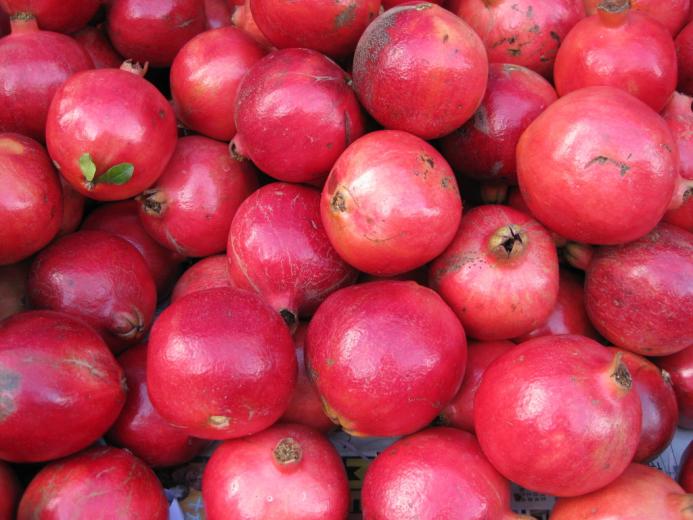Pomegranates
The pomegranate is an incredibly healthy fruit with a deep red leathery skin encompassing juicy edible red seeds wrapped in a spongy white membrane. The red seeds are called arils and they are actually juice sacs with one seed in each sac.
The pomegranate tree is native to Iran and has been cultivated since ancient times throughout the Mediterranean region of Asia, Africa and Europe. The tree thrives in semi-arid climates and can tolerate droughts very well. Today, the most important growing regions of pomegranates are Afghanistan, Bangladesh, Burma, China, Egypt, Pakistan, Iran, Iraq, India and Saudi Arabia. In California, the fruit is commercially grown in Tulare, Fresno and Kern counties.
The arils (red juice sacs) of the pomegranate have a sweet and tart flavor and are eaten whole, seeds and all. To open a pomegranate, score the skin several times vertically and then break them apart. The juice sacs can be lifted out of the rind and eaten immediately. Fresh pomegranate juice is popular in several countries including Iran. You can make it at home by reaming the halved fruits on an orange juice extractor. Pomegranate juice can be made into sauce for sweet or savory dishes, and can also be transformed into wine.
Pomegranates, considered a superfood, are rich in vitamin C, potassium and antioxidants and are a good source of fiber. More importantly, the juice of a raw pomegranate is particularly rich in three different types of polyphenols –tannins, anthocyanins and ellagic acid–which are potent forms of antioxidants.
Pomegranates are in season from September through January. They are picked when ripe so they are ready to eat when you see them in grocery stores or at the farmers market. The heavier the fruit is, the juicier it will be!


